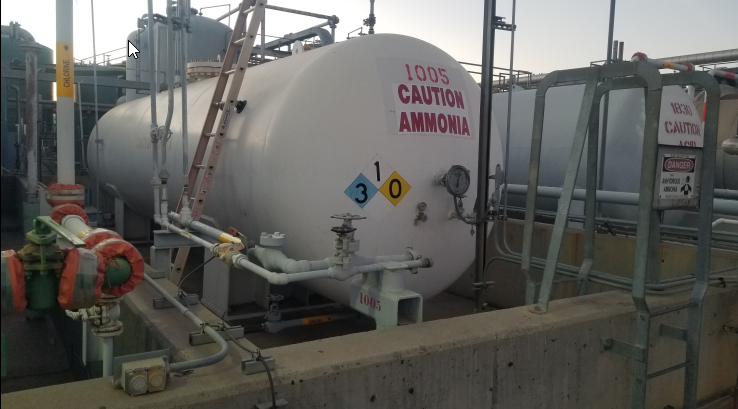
An owner/operator presenting on aqueous-ammonia (NH3) storage tank inspections at the CCUG2020 Week Four session said that according to the governing standard, API510, a “fitness for service” assessment should be conducted every 10 years (or half the remaining life calculated during the last inspection) for pressure tanks. The method results in a calculated remaining life, and typically the work is performed by a specialist contractor squad including an API specialist, NDE technicians (usually two), a confined-space entry team, standby rescue team, environmental contractor, scaffolders, and the ammonia supplier.
Plant management should assign a point person to the project who coordinates with the contractors, prepares the tank documentation, gathers previous inspection reports, etc.
Since tank wash-down water must be disposed of as hazardous waste, an accurate estimate of residual NH3 is necessary ahead of the work. You can expect between about 2000 and 3000 gallons of RCRA-type waste which will have to be disposed of or stored onsite in a tanker. Plant should allow a full day for tank cleaning.
Once cleaned, the actual tank inspection is “pretty straightforward.” The NDE inspectors divide the tank surface into a grid and record thicknesses from ultrasonic transmitter (UT) readings at each location. Allow a second day for the inspection work. Plant staff should take the opportunity to service pressure relief valves, vacuum breakers, and other components, and to leak-check the manway ports (easier for vertical tanks). Make sure to have on hand sufficient calibrated air monitors and extra ammonia sensors.
In response to questions, the presenter said that (1) they had not considered neutralizing aqueous NH3 prior to opening the tank, (2) the dump valve should be inspected and/or replaced at each inspection, and (3) the tanks are carbon steel, piping is stainless, and that iron can mix with the NH3.


